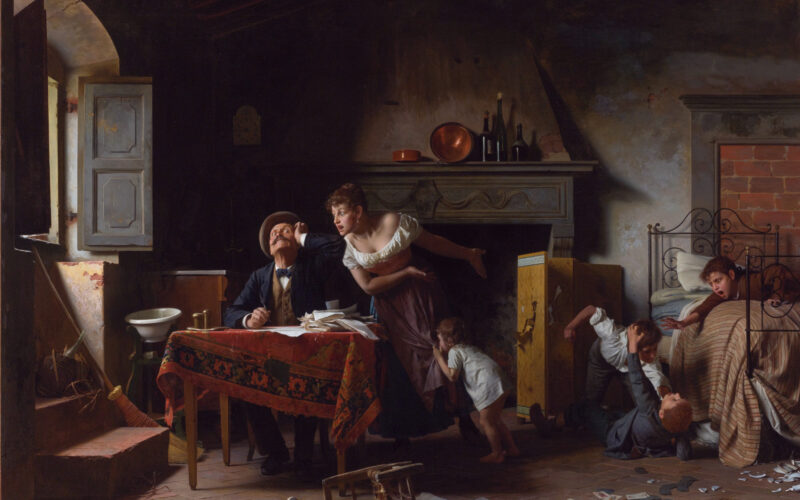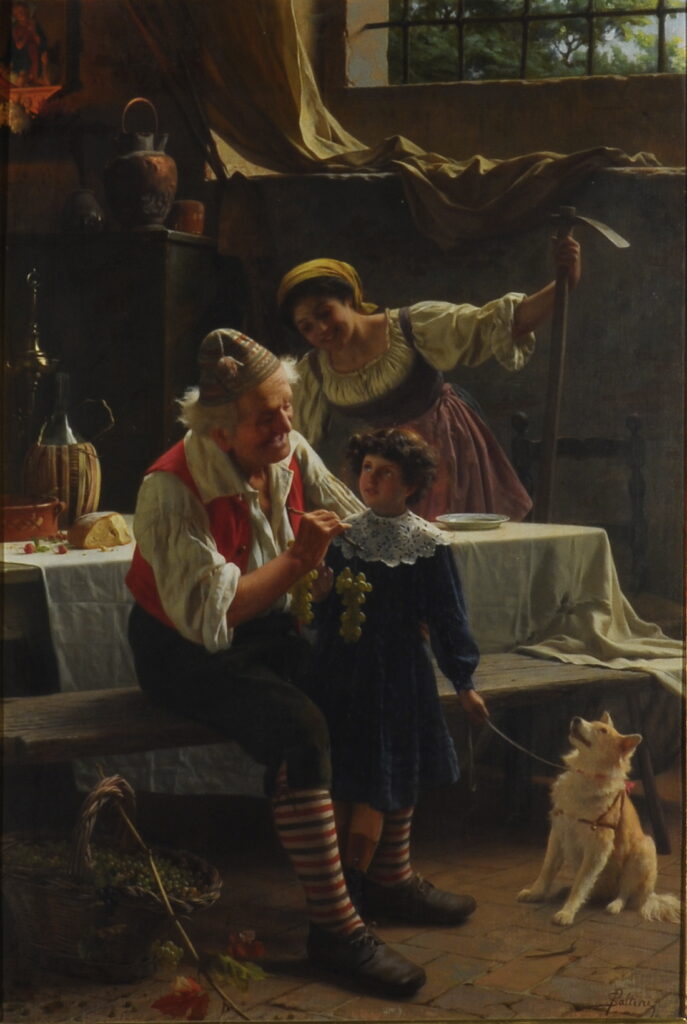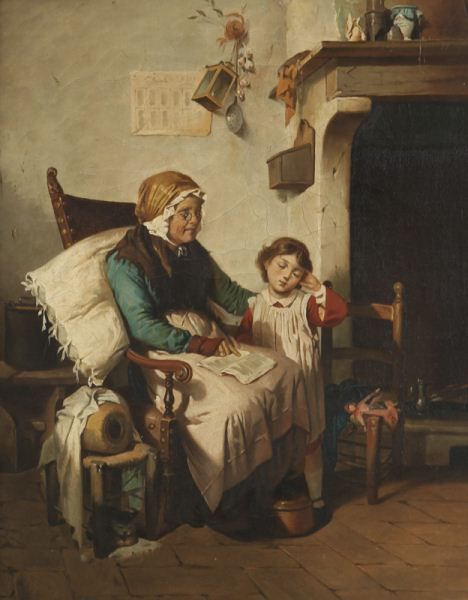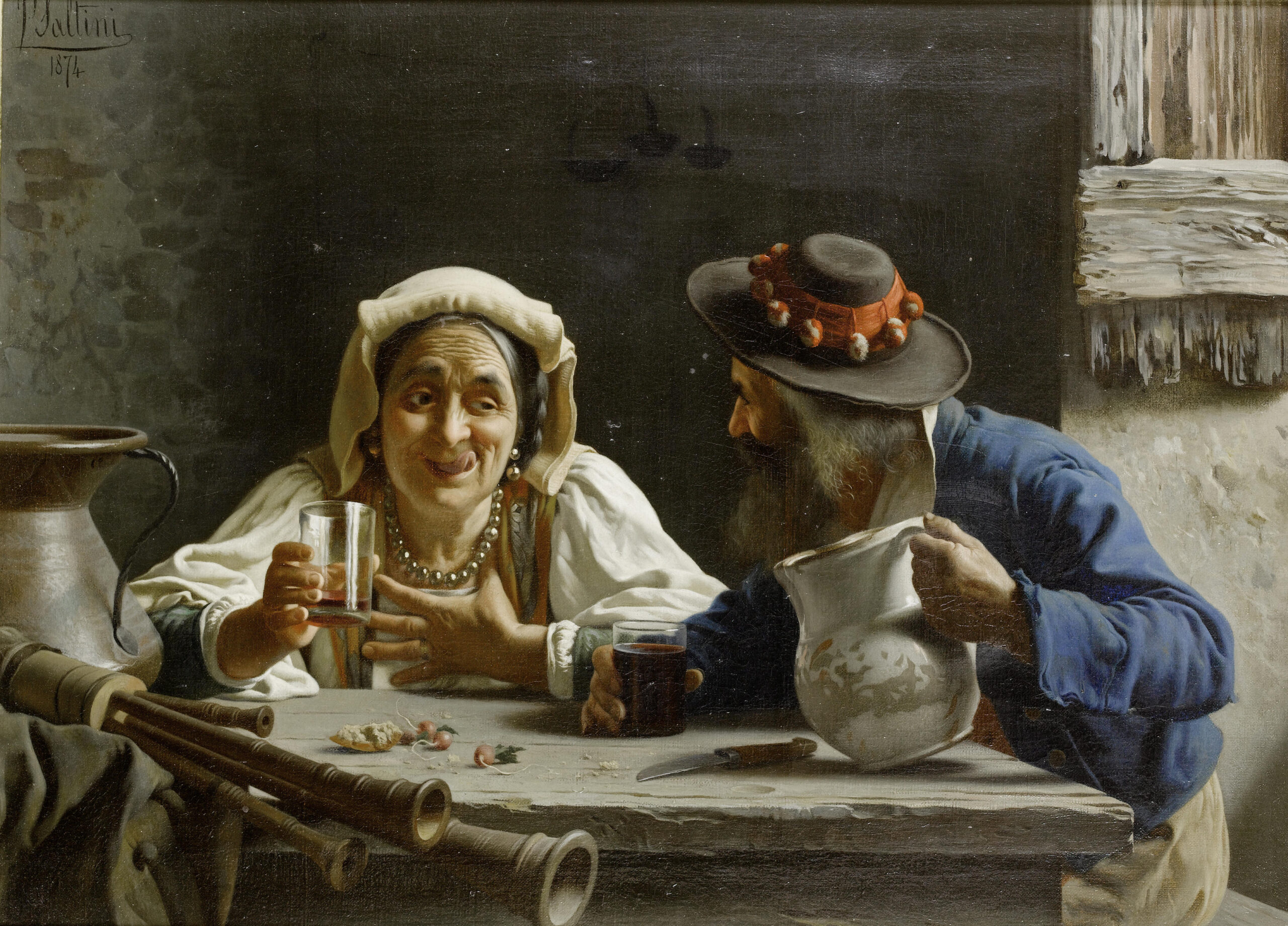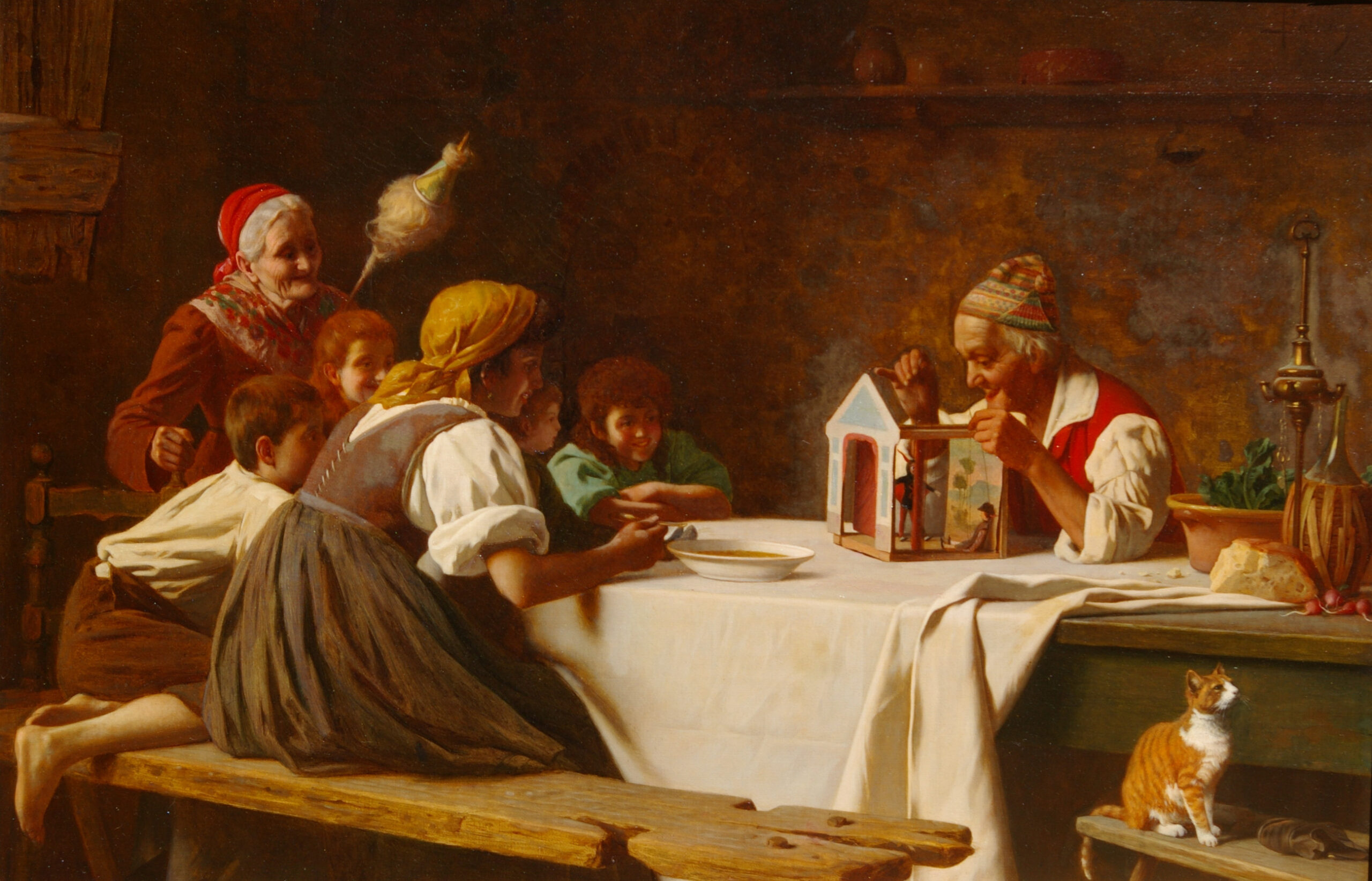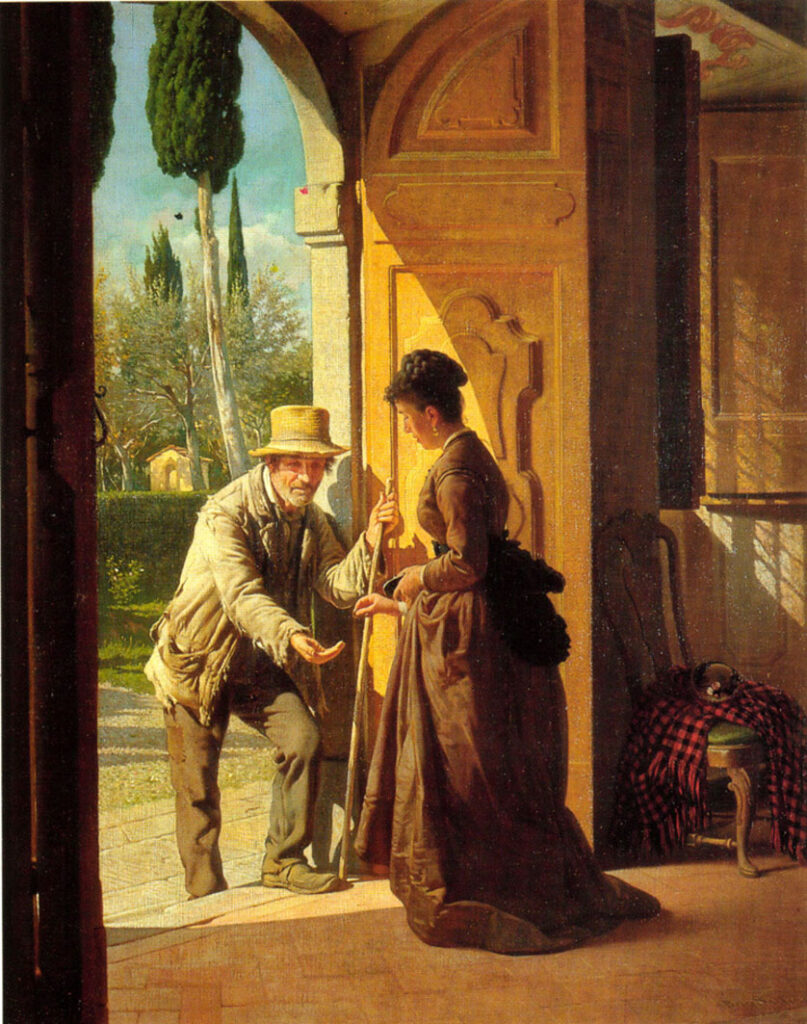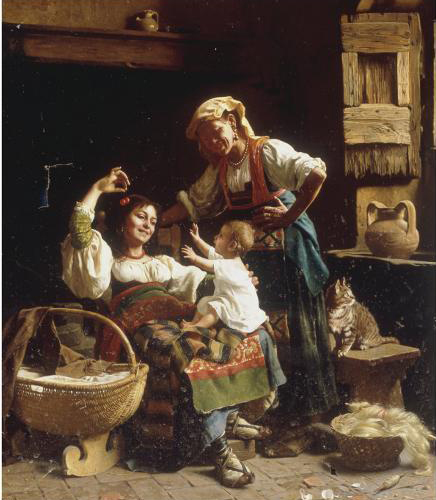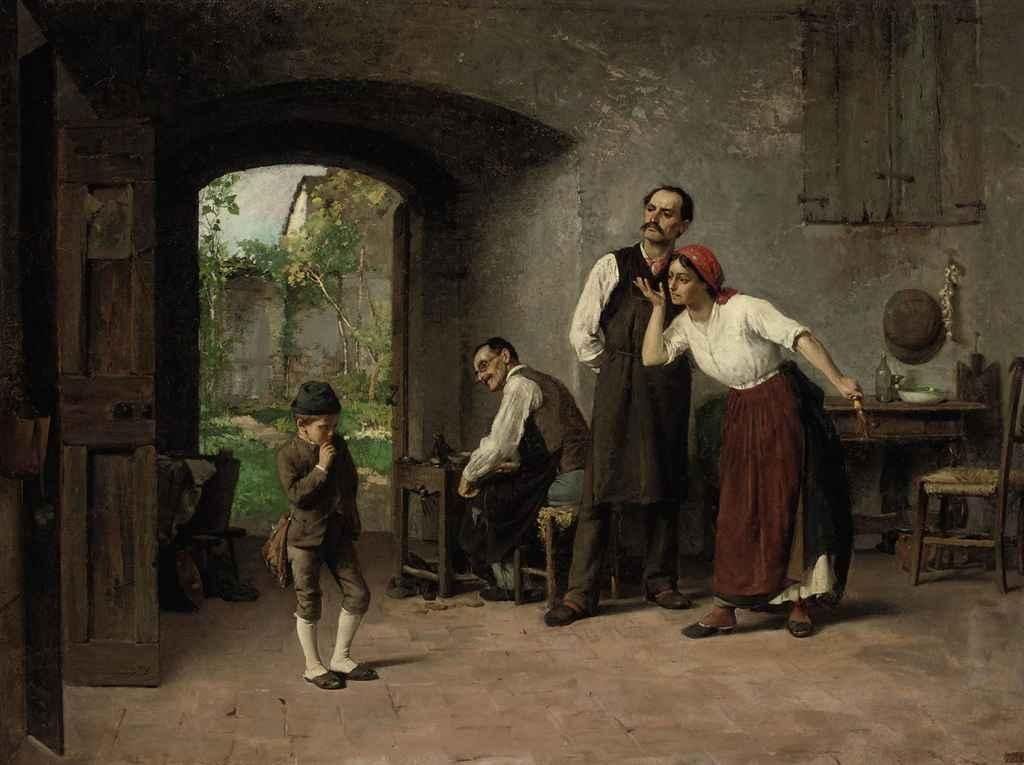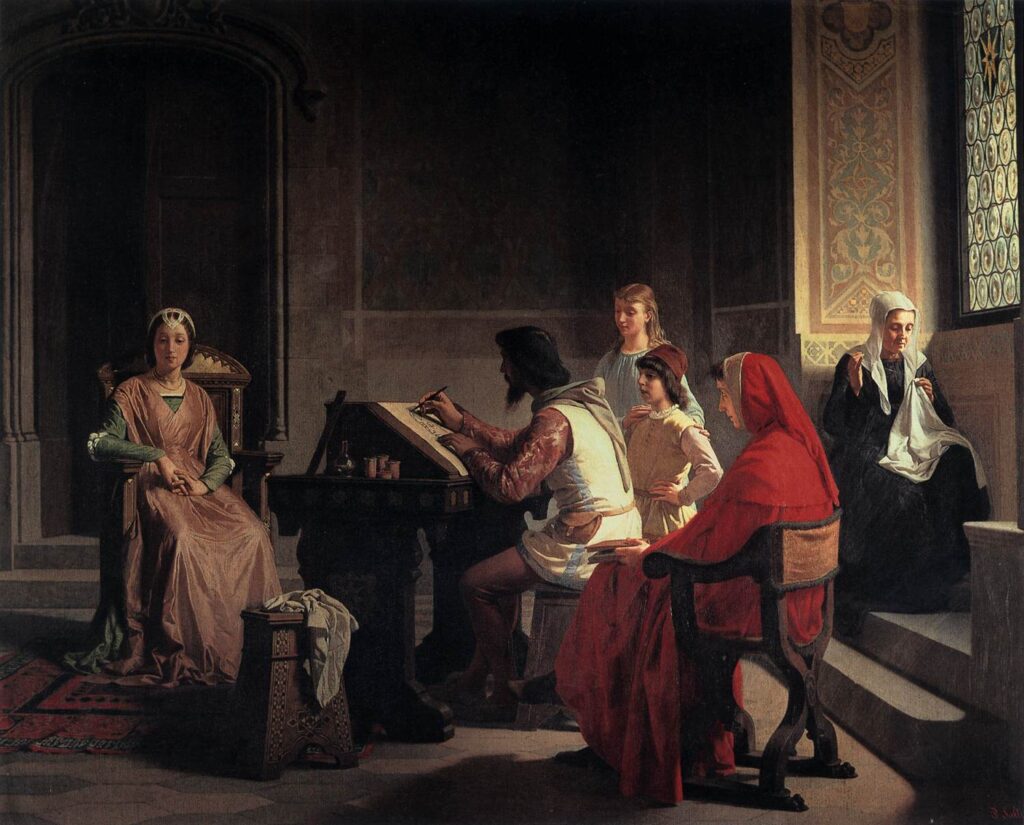During the 19th century, a genre of painting vigorously established itself, choosing scenes from everyday life as its subjects. These paintings, like vivid windows into the past, can sometimes appear overly sweet, almost cloying when viewed with a contemporary aesthetic sense, portraying an idealized society, trapped in roles that seemed eternal and unchangeable at the time.
It is challenging to fully immerse oneself in the emotions that motivated the purchase of these works, which were not intended to exalt either the Church or a now declining aristocracy. Their buyers were the emerging bourgeoisie: professionals, merchants, industrialists, all eager to reflect their own status.
Today, observing these paintings through the critical eye of modern society, inevitable reflections emerge. The depictions of peasant families, painted in an aura of happiness, prompt us to think about the harsh reality of fieldwork, even performed by children as young as eight or nine years old. In them, we see the disparity of social classes, a lens inevitably shaped by our current mindset.
But is it really correct to interpret these paintings with today’s eyes? The answer is complex, inevitably influenced by our historical context.
Let’s now focus on Pietro Saltini (1839-1908), an artist whose historical and social period offers a significant context for understanding his works. His education in Humanities and Philosophy at the Piarists, a religious order dedicated to the instruction and Christian education of youth, is reflected in the themes of his works: the family, often patriarchal, occupies a central role, always portrayed in moments of joy and simplicity.
Saltini, with a delicate and poetic touch, depicted a dignity in poverty, never illustrated with disdain or pietism. His artistic vision was rooted in the social reality of the time, a fabric that everyone knew and lived daily.
Moreover, the 19th century was a period of fervor for the unification of Italy. Artists from various disciplines felt the weight of this commitment. Showing the people in their everyday features was a way to underline a common national identity, an echo of the themes of the Risorgimento.
Saltini’s work depicting episodes of an idealized Middle Ages, particularly the communal period, strengthens this narrative of an Italian people in search of unification and independence.
Although Italian painting of the 1800s did not experiment with innovative pictorial languages like some of its European contemporaries, it managed to capture the popular sentiment, proposing moral and political content accessible to all.
Saltini, with impeccable academic training, was appreciated both as a painter and a critic. His works found broad resonance with the public, so much so that today there is still a thriving market for his reproductions.
It is noteworthy that, unlike many of his contemporaries, Saltini never abandoned his “lesser activity” of fresco painting and ornamentation. His skill extended from creating trompe l’oeil, classical allegories, naturalistic fantasies, to designing altars and sacred vestments, works that are unfortunately mostly dispersed or lost today.

